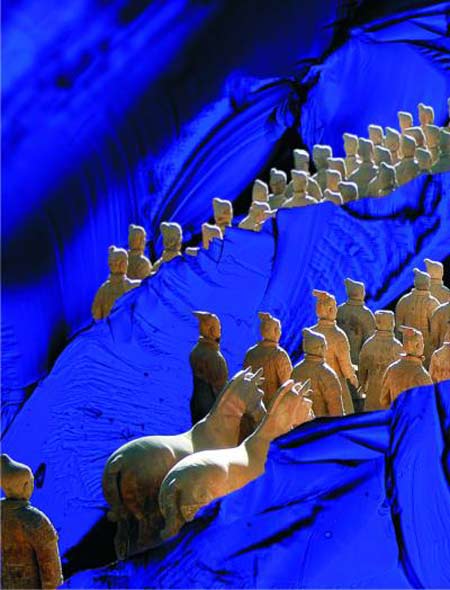Physicists: raiders of the lost dimension
TALLAHASSEE, Fla., June 1 (UPI) -- U.S. physicists say they have taken another step toward understanding the quantum mechanics of the universe.
Researchers from the Tallahassee, Fla.-headquartered, National High Magnetic Field Laboratory say the advance came from the study of a pigment that was used in China more than 2,000 years ago to color Xi'an terra cotta warriors.
When the pigment is exposed it to very high magnetic fields and very low temperatures, it enters a state of matter that is rarely observed: it loses a dimension, going from 3D to 2D.
Theoretical physicists have postulated that kind of dimensional reduction might help explain some mysterious properties of other materials -- such as high temperature superconductors and metallic magnets -- that occur near absolute zero. But until now, a change in dimension had not been experimentally observed.
"As often happens in science, we found something we weren't looking for," said Marcelo Jaime, an experimental physicist at the magnet lab's Pulsed Field Facility in Los Alamos, N.M. "Much to our surprise, we found that when the temperature is low enough, the transition into the new magnetic state occurs in an unexpected way."
The study appears in the journal Nature.
TALLAHASSEE, Fla., June 1 (UPI) -- U.S. physicists say they have taken another step toward understanding the quantum mechanics of the universe.
Researchers from the Tallahassee, Fla.-headquartered, National High Magnetic Field Laboratory say the advance came from the study of a pigment that was used in China more than 2,000 years ago to color Xi'an terra cotta warriors.
When the pigment is exposed it to very high magnetic fields and very low temperatures, it enters a state of matter that is rarely observed: it loses a dimension, going from 3D to 2D.
Theoretical physicists have postulated that kind of dimensional reduction might help explain some mysterious properties of other materials -- such as high temperature superconductors and metallic magnets -- that occur near absolute zero. But until now, a change in dimension had not been experimentally observed.
"As often happens in science, we found something we weren't looking for," said Marcelo Jaime, an experimental physicist at the magnet lab's Pulsed Field Facility in Los Alamos, N.M. "Much to our surprise, we found that when the temperature is low enough, the transition into the new magnetic state occurs in an unexpected way."
The study appears in the journal Nature.




Comment